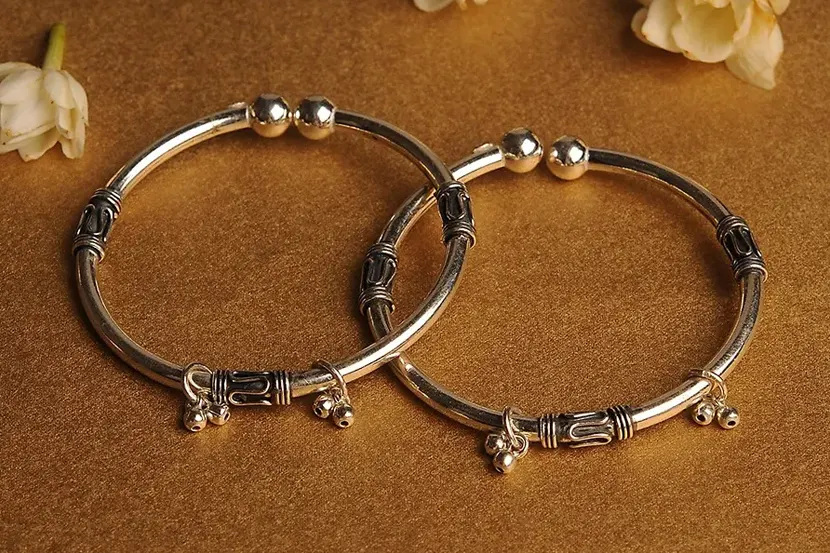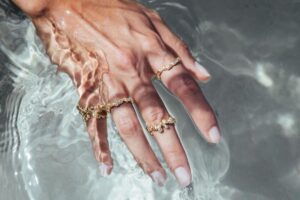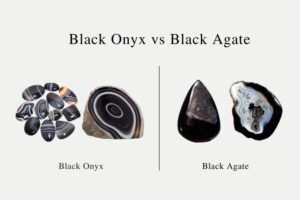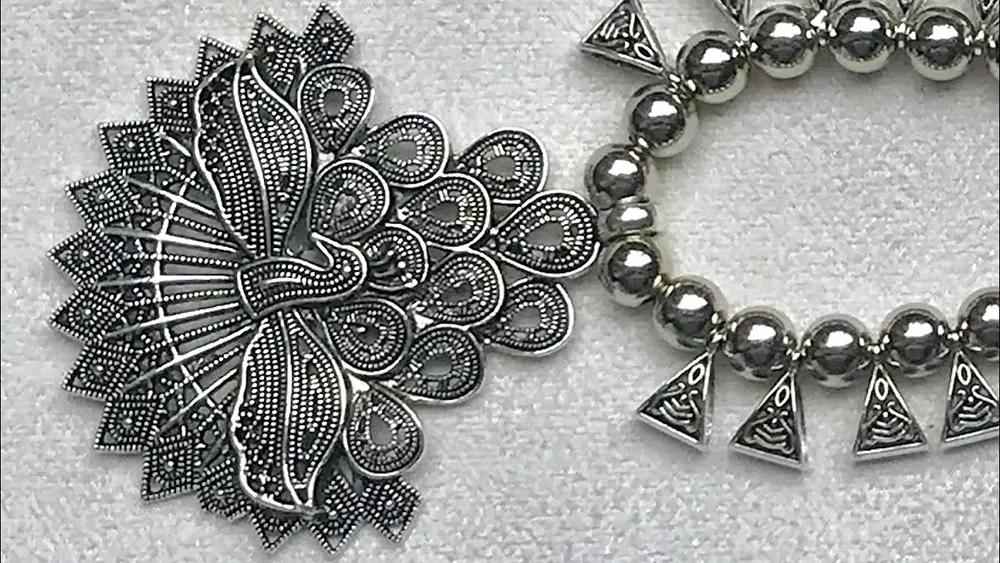
Oxidized jewelry is certainly one of the new trends in jewelry that is gaining rapid popularity, especially in India, but it is also gradually gaining ground in the West and other parts of the world. Have you heard of it? Are you familiar with it? Everything you need to know about oxidized jewelry is provided in this article, ranging from their manufacturing process to their care and maintenance. It also discusses the reasons behind their recent popularity. So with that said, buckle up as we take a ride through the interesting world of oxidized jewelry.
What is Oxidized Jewelry
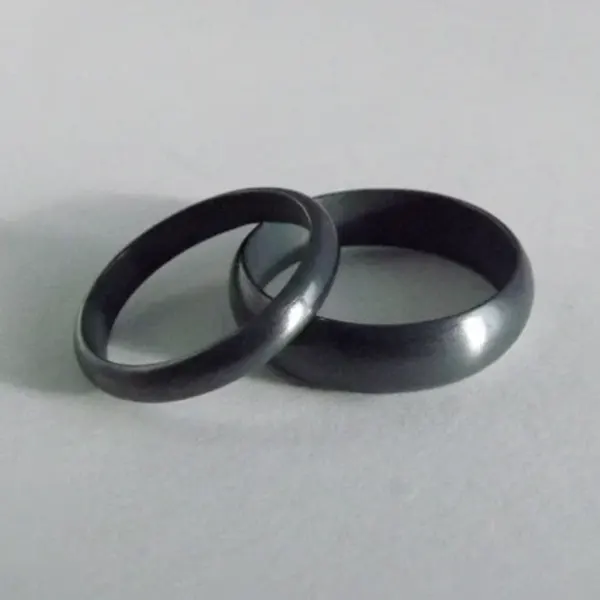
Oxidized jewelry is a term that refers to sterling silver jewelry that has been deliberately oxidized (combined with sulfur) to create a strong, black patina on its surface. The term “oxidized jewelry” is inherently misleading to those who have no previous knowledge of chemistry, as one might think the element “oxygen” is responsible for this process. However, oxygen plays no part in this process.
How is oxidized jewelry manufactured in factories?
The process of forming oxidized jewelry is essentially a process of speeding up the natural tarnishing process in jewelry (usually sterling silver jewelry) under controlled conditions. The goal of this process is to create a patina that gives the jewelry a blackened/gray antique appearance, particularly in highly textured jewelry. Although there are other alloys that may be used in the manufacture of oxidized jewelry, such as copper, zinc, nickel, etc. However, sterling silver, which is an alloy of silver, copper, and other alloys in minute quantities (92.5% silver, 7.5% copper, and other alloys), is the most common alloy used in the manufacture of oxidized jewelry.
Pure silver is highly inert or unreactive; thus, the actual oxidation of its surface is a very difficult process. Aside from that, silver in its pure form is not suitable for jewelry-making due to its excessive malleability or softness.
There are various processes used in the oxidation of sterling silver to form oxidized jewelry. Some of them will be discussed in detail below to provide a good understanding of how oxidized jewelry is made.
- Using liver of sulfur:
To create the blackened appearance on silver jewelry, artisans employ a chemical compound called liver of sulfur, which is potassium sulfide. This procedure allows a wide variety of colors to be produced. The color will resemble matte gunmetal black at full power. A rainbow of colors, including shades of green, purple, gold, and red, can be achieved with a measured application.
- Using a sulfur solution:
In this method, a sulfur-containing chemical is dissolved in warm or hot water to produce a bright yellow solution. This solution can then be painted onto the jewelry, or the entire piece of jewelry can be dipped into it. If the solution is too powerful, the dark coating will not make a firm connection and will peel away. It is preferable to apply multiple thin coatings rather than one thick layer. This decorative darkening procedure is typically applied to highly textured objects. The raised and lowered portions of the jewelry piece are nicely contrasted when the entire piece is darkened and the raised portions are polished back to a silver hue.
- Using boiled eggs
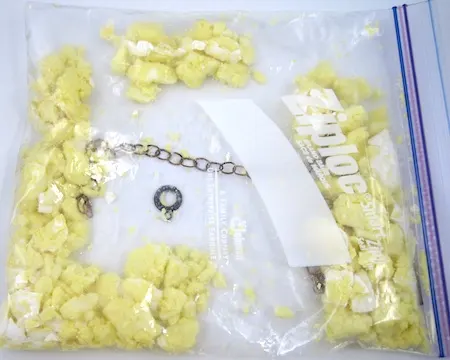
While this may not be an industrial method for oxidizing jewelry, it certainly is a method you should try out yourself as an oxidized jewelry enthusiast.
Although it may sound weird, cooking eggs can also tarnish silver. Put two eggs in some water and bring it to a boil. Take the eggs out after about ten minutes and place them in a small bag. Squish them until they are broken up into small pieces. When you put your antique silver artifacts in the bag, the sulfur released will corrode them.
Simply place the item in the bag for a few hours; the longer it is in contact with the eggs, the more oxidized it will become. When you’re satisfied with the color, remove the silver piece, then thoroughly wash and dry it.
- Using silver black
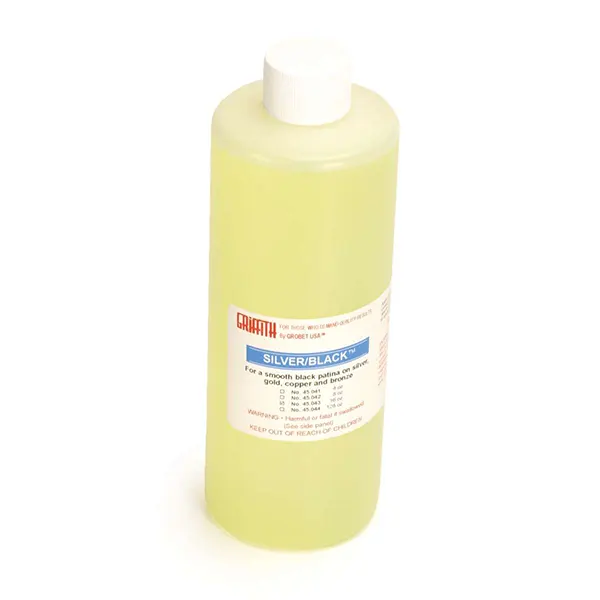
Silver black, a combination of hydrochloric acid and tellurium, is a substance that oxidizes metals in the same way that liver of sulfur does. This means it’s similar to tarnishing, except you’re doing it on purpose and have control over which portions become black and which don’t. This effect is sometimes utilized by jewelers to highlight intricacies in a finished piece of jewelry. The detail is considerably easier to discern when some portions of the metal are darkened. It is also a technique for giving jewelry the appearance of being an antique piece rather than being brand new.
- Using luster gel
Last but not least of the various techniques for oxidizing jewelry is the use of luster gel. Luster Gel is a relatively new product that is intended to alter the appearance of your silver jewelry. It can oxidize them, but it can also be used to modify the hue of silver. Simply choose the color you want (the gel is available in a range of hues) and follow the instructions.
Why the Popularity?
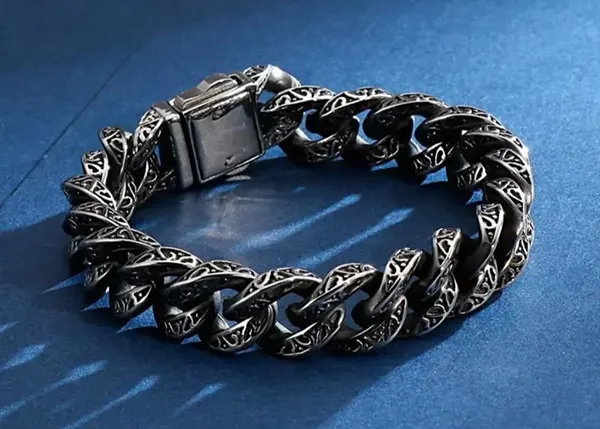
Rapidly becoming a trendy force in the world of jewelry, you might be wondering what the reason behind the rising popularity of this jewelry type is. In this section, we’ve compiled a couple of reasons why people are now turning their attention towards this type of jewelry.
- Because it is already tarnished, it does not require constant cleaning
- It gives jewelry an antique look. Antiques are objects that are from a previous era that are considered valuable because of their age, history, appeal, rareness, or superior quality
- The oxidation effect gives the jewelry a more refined and sharper appearance.
- It is very versatile and cost effective: Not only can different metal alloys be used to create oxidized jewelry, but it is also available in a number of styles, including bangles, earrings, pendants, cuff, anklets, long and short necklaces, nose rings, and bracelets
- Because it is a relatively new trend, it provides the jewelry user and the item itself a sense of distinctiveness
- When properly polished, or when time runs its course on the exterior surface of an oxidized item, it produces a fascinating effect in strongly textured pieces or jewelry, with the deeper rough spaces remaining black while the outside surfaces lighten, providing a striking contrast
There are definitely far more reasons than these; perhaps if you decide to give it a try, you will discover another reason to enjoy this new trend.
Does oxidized jewelry fade?
Yes, the oxidized layer of oxidized jewelry wears away over time, revealing the real color of silver or whichever metal was used to make the item. This is due to regular, unavoidable wear and tear from daily use. Although it is possible to handle this problem on your own, we recommend seeing a jeweler to avoid making mistakes that could harm your jewelry.
On items that have little contact with their environment, such as earrings and necklaces, oxidized finishes last the longest. Since rings and bracelets rub on objects we touch more regularly, they don’t tend to maintain their color as well. Blackened finishes applied to the crevices of a design tend to keep their color the best, whereas elevated sections of the piece polish up with time.
It’s also worth noting that the oxidized finish on your blackened silver jewelry can be recovered at any time with the right treatment.
How to Care for Oxidized Jewelry
The fact that your jewelry has an oxidized or tarnished surface does not mean that it does not require proper care. The silver sulfide (the chemical responsible for the formation of patina on the surface of oxidized silver) exists only on the surface of the metal and therefore can easily be worn away if proper care is not maintained.
With that said, let us now examine some maintenance guidelines for your oxidized jewelry in order to keep it looking stunning.
- First and foremost, do not use the same cleaning methods you would for regular silver or other jewelry. Silver polish, for example, can destroy the smoky, blackened appearance of your corroded silver.
- For the same reason, avoid using a polishing cloth on these oxidized jewelry.
- Remove jewelry when anticipating aggressive contact. For example, you should pull off your rings before exercising, gardening or swimming.
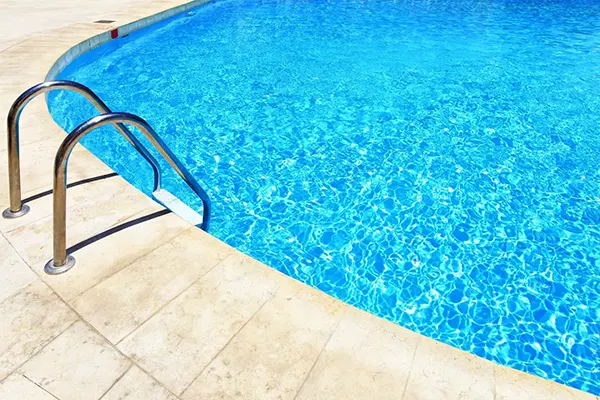
- Washing oxidized pieces too regularly with soap and water may eventually wear away the surface layer of patina, exposing the un-oxidised silver underneath.
- When not in use, it is critical to keep oxidized jewelry away from direct sunlight. This is due to the fact that direct sunshine is known to fade the color of silver over time.
To get the best results when cleaning your oxidized jewelry, follow these tips:
- In a dish, mix warm water and mild washing liquid, then immerse your oxidized silver in the solution.
- If scrubbing is absolutely necessary, use a soft, clean cloth or a soft toothbrush to do this ensuring to use as minimal force or pressure as possible.
- Allow it to rest in the mixture for 10–20 minutes. Once the silver appears clean, scoop it out and carefully wipe it dry, or simply let it air dry.
- That’s all there is to it; now enjoy your pristine jewelry!
Most cleaning procedures will require you to re-oxidize the silver because they will inevitably result in some restoration of polish or loss of patina, depending on your point of view.
It’s a good thing you now know how to oxidize your jewelry
Conclusion
It is impossible to deny that oxidized silver jewelry looks stunning when worn. Everyone adores the exotic look of the jewelry; therefore, it is a trend that has definitely come to stay and is not merely some passing fad. There is a wide range of oxidized silver jewelry available on the market, and it is well worth purchasing because it has few disadvantages and numerous advantages for people of all ages and interests. It is quite adaptable and comes in a variety of styles ranging from plain and humble to regal and luxurious.
Being only a surface treatment (similar to gold or silver plating in watches and jewelry), oxidized jewelry will, after some time, fade, and depending on how much wear you give your pieces, the actual character of the silver will shine through. As has been stated earlier, this can be quite appealing in densely textured pieces. The deeper, rougher crevices will remain black while the outside surfaces brighten, offering a fascinating contrast.
